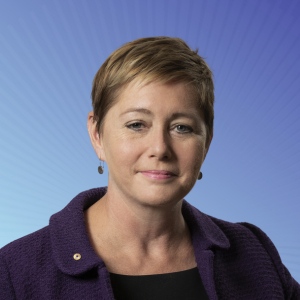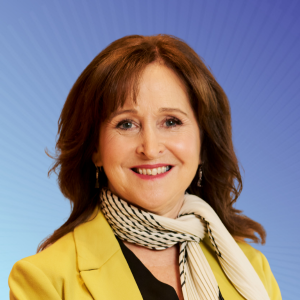Member engagement, education and empowerment have emerged as the holy grail of the superannuation industry. During almost every session at any recent conference or industry forum, the question of member communication and engagement has emerged in some form.
The approach to date has predominantly been, tell them, teach them, train them – in effect a monologue of information from the informed (the industry) to the uninformed (the member). Gamification of member communication quite literally changes the game.
Digital gaming—on mobile phones, tablets, PCs and gaming consoles—is often regarded as a distraction that makes minutes and hours wastefully disappear. In reality it’s a powerful and dynamic tool that taps into the basic neuroscience triggers of human motivation.
Properly harnessed, the principles of gamification can be leveraged to deliver powerful communication that informs and engages. Gamification has been proven to provide both the extrinsic motivation required to drive action and to enhance the intrinsic motivation of others.
What is gamification all about?
Firstly, gaming is not a new phenomenon, it’s as ubiquitous as mobile devices. Solitaire, Angry Birds and Candy Crush are constant companions to many on daily commutes. While only a few people classify themselves as hard core gamers, the gaming industry dwarfs the movie and music industries. According to a PwC Report released in 2014, the digital gaming industry was worth approximately USD $70 billion. In 2018 this figure has grown to a staggering USD $140bn. This is more than twice the size of the movie industry and three times the size of the music industry.
Why does it work?
Because gaming is addictive. It’s all about rewards – not just random rewards, but carefully planned, incremental rewards that are designed specifically to stimulate the player to go back, again and again…and again.
From a behavioural psychology perspective, rewards in games trigger the release of dopamine. Simply put, dopamine is a neurotransmitter released in the brain when rewards are received unexpectedly. Our bodies are so effective at sensing this within a game that we learn to anticipate rewards and the release of dopamine. This, along with other key factors, leads to motivation.
Turning the industry on its head
Gamification is the process of ‘gamifying’ real life activities. For example, encapsulating all the fun/addictive elements of games and applying it to retirement savings – stimulating competitive behaviour and motivating members through status, reward and educational progress. The more goals you achieve, the more dopamine is released. The more dopamine is released, the higher the motivation to progress and attain yet more rewards.
In the UK the LV= Pension Modeller provides a good example: lvpensionsvillage.co.uk/calculators/pension_modeller
The inputs are similar in many ways to other online modellers. The output, however, is not a chart or a deterministic number; it’s a weather forecast. Members effectively game their contributions, investment risk and retirement date to get the best weather outlook for their retirement. The reward is a sunny, cloudless blue sky. Unlike other retirement calculators, members return to “play” it time and time again, gaming the sunshine to create their optimal retirement outcome.

The numbers stack up
The results from the LV modeller have been remarkable. Switching from a deterministic bar graph to a picture that a member can ‘game’ the outcome has seen a 21 times growth in usage of the modeller. So beyond a British fascination with the weather, it clearly shows that gamification can have a marked impact on member education, engagement and most importantly can drive behavioural change.

Many learning processes can be tedious when the process is passive. However, once an interactive element in introduced, one that rewards the learner (no matter how small), the learning process becomes active and the material often more stimulating. Gamification helps maintain focus while going through the learning process, stimulates return play, and gives satisfaction for an achievement reached or milestone passed. It has been shown to significantly improve knowledge retention, understanding and interest.
Another example of gamifying cause and effect is an online game called ‘Superfly’. And for an organisation in the US the results have been particularly impressive. Superfly is fundamentally the three-simple metrics of retirement saving – contributions, level of investment risk and retirement timeframe. Users are required to choose a type of aircraft they want to fly – they can choose a propeller powered aircraft (representing a plane which is slower flying but easier to manoeuvre – that is, low investment risk option) or a jet aircraft (much faster but much harder to fly – representing the volatility of a high growth investment option) or a plane in between (balanced investment option).
The object of the game is then to fly your chosen plane through hoops which represent contributions. The better the result in flying your chosen plane through as many hoops as possible the better the final outcome – your retirement. Users then try and land their plane successfully on the Island of Wowi. It’s a great way to teach members the trade-off between reward and risk when it comes to making investment choices, the value of contributions over time and choosing a retirement timeframe. The game is also highly addictive, and users can share their results via social media and set up leader boards with friends and work colleagues.
Playing the game
Gamification is a powerful, yet currently underused tool for effective member engagement. As an industry we have been slow to respond to underlying changes in member behaviour – members were living their lives online long before we, collectively, provided superannuation functionality online. We have been slow to recognise members’ reliance on tablets and mobile devices. Gamification enables us to reach, engage, motivate and empower members today.



































